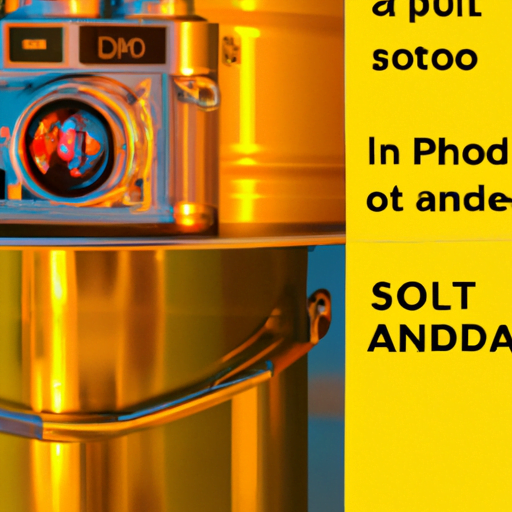
-
Table of Contents
Exploring the Role of Storytelling in UX/UI Design

When it comes to user experience (UX) and user interface (UI) design, the focus is often on creating visually appealing and functional interfaces. However, one aspect that is often overlooked but plays a crucial role in the success of a design is storytelling. Storytelling in UX/UI design involves using narratives to engage users, guide them through the design, and create a memorable and meaningful experience. In this article, we will explore the role of storytelling in UX/UI design and how it can enhance the overall user experience.
The Power of Storytelling
Storytelling has been an integral part of human communication for centuries. It is a powerful tool that can captivate and engage an audience, evoke emotions, and convey complex ideas in a relatable and memorable way. In the context of UX/UI design, storytelling can be used to create a connection between the user and the product or service being offered.
By incorporating storytelling elements into the design, designers can create a narrative that guides users through their journey, making the experience more immersive and enjoyable. Storytelling can also help users understand the purpose and value of the product or service, making it more compelling and increasing the likelihood of user engagement and conversion.
Creating a Narrative
Creating a narrative in UX/UI design involves structuring the design in a way that tells a story and guides users through a series of interactions. This can be achieved through various design elements, such as visual cues, animations, and microinteractions.
For example, consider a mobile banking app that wants to create a narrative of financial empowerment. The onboarding process could start with a welcoming message that sets the stage for the story, followed by a series of screens that introduce the app’s features and benefits. Each screen can be designed to build upon the previous one, creating a cohesive and engaging narrative that encourages users to explore further.
Another example is the website of a travel booking platform. The homepage could feature a visually appealing hero section with a captivating image and a headline that sparks curiosity. As users scroll down, they are presented with sections that tell stories of different travel destinations, showcasing beautiful images, personal anecdotes, and recommendations. This narrative approach not only provides valuable information but also creates an emotional connection with the users, making them more likely to book their next trip through the platform.
Engaging Users through Emotion
One of the key benefits of storytelling in UX/UI design is its ability to evoke emotions in users. Emotions play a significant role in decision-making, and by creating a design that triggers positive emotions, designers can influence user behavior and drive desired actions.
For example, a food delivery app can use storytelling to create a sense of anticipation and excitement. When users place an order, the app can display a progress bar that visually represents the different stages of the delivery process. Each stage can be accompanied by a short message or animation that builds anticipation, such as “Your order is being prepared with care” or “Your delicious meal is on its way.” This not only keeps users engaged but also creates a positive emotional experience, increasing customer satisfaction and loyalty.
Similarly, an e-commerce website selling sustainable fashion can use storytelling to evoke a sense of purpose and connection with the users. By showcasing the stories of the artisans behind the products, the website can create a narrative that highlights the ethical and environmental values of the brand. This can resonate with users who are passionate about sustainability, making them more likely to make a purchase and become brand advocates.
Case Studies: Storytelling in Action
Several companies have successfully incorporated storytelling into their UX/UI design, resulting in improved user experiences and business outcomes. Let’s take a look at a couple of case studies that highlight the effectiveness of storytelling in design.
1. Airbnb
Airbnb is a prime example of a company that uses storytelling to create a compelling user experience. The website and app feature captivating images, personal stories, and detailed descriptions of the accommodations available. By showcasing the unique experiences and adventures that users can have through Airbnb, the design creates a sense of wanderlust and inspires users to book their next trip.
Additionally, Airbnb’s “Experiences” feature takes storytelling to the next level. It allows hosts to offer curated activities and tours, complete with narratives that immerse users in the local culture and history. This not only enhances the overall user experience but also differentiates Airbnb from its competitors, making it a preferred choice for travelers.
2. Duolingo
Duolingo, a language-learning platform, leverages storytelling to engage users and motivate them to continue learning. The app incorporates gamification elements, such as leveling up and earning rewards, to create a sense of progression and achievement. Each lesson is designed as a story, with characters and scenarios that users can relate to. This not only makes the learning process more enjoyable but also helps users remember and apply the language skills they have acquired.
Statistics on the Impact of Storytelling in UX/UI Design
The effectiveness of storytelling in UX/UI design is supported by various statistics and research findings. Here are a few notable ones:
- According to a study by Nielsen Norman Group, storytelling in UX design can increase user engagement by up to 40%.
- A survey conducted by Adobe found that 68% of consumers prefer brands that provide personalized and relevant content.
- In a study by Stanford University, it was found that stories are up to 22 times more memorable than facts alone.
- Research by Forrester revealed that emotionally engaged customers are more likely to recommend a brand, with a 33% higher likelihood of repurchasing.
Summary
Storytelling plays a crucial role in UX/UI design, enhancing the overall user experience and driving desired actions. By creating a narrative, designers can guide users through their journey, evoke emotions, and create a connection between the user and the product or service. Through engaging examples and case studies, we have seen how storytelling can be effectively incorporated into design to create memorable and meaningful experiences.
As the digital landscape continues to evolve, it is essential for designers to recognize the power of storytelling and leverage it to create compelling and impactful designs. By understanding the role of storytelling in UX/UI design and incorporating it into their process, designers can create experiences that not only meet user needs but also leave a lasting impression.
